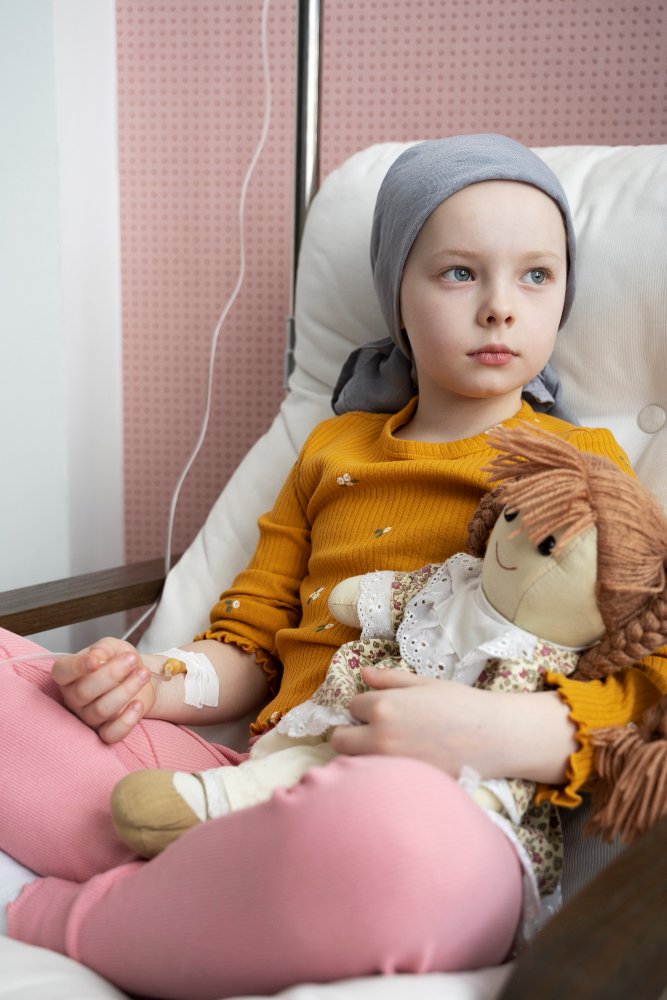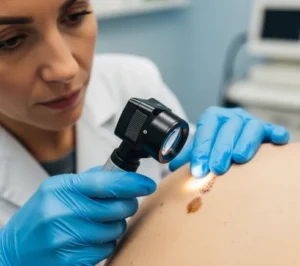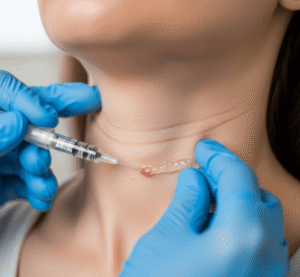Overview
Acute Lymphoblastic Leukemia (ALL) is a fast-growing cancer of the blood and bone marrow. It primarily affects white blood cells called lymphocytes, which are crucial for the body’s immune defense. ALL is most common in children but also occurs in adults. It progresses rapidly and requires immediate medical treatment, but with modern therapies, the prognosis—especially in children—has significantly improved.
What is Acute Lymphoblastic Leukemia?
Acute Lymphoblastic Leukemia is a type of blood cancer that develops from immature lymphoid cells in the bone marrow. These abnormal cells multiply uncontrollably, crowding out healthy blood cells and impairing the immune system.
There are two main subtypes based on the type of lymphocytes involved:
- B-cell ALL – most common
- T-cell ALL
ALL is categorized as “acute” because of its rapid onset and progression. It differs from chronic leukemias, which develop more slowly.
Symptoms
Symptoms of ALL may resemble flu or other common illnesses. They result from a shortage of normal blood cells and include:
- Fatigue and weakness
- Frequent infections
- Fever
- Easy bruising or bleeding (e.g., nosebleeds, gum bleeding)
- Pale skin (anemia)
- Bone or joint pain
- Swollen lymph nodes
- Enlarged liver or spleen
- Loss of appetite and weight loss
- Shortness of breath
- Headaches or neurological issues (in cases where leukemia spreads to the brain or spinal cord)
Causes
The exact cause of ALL is unknown, but it involves mutations in the DNA of bone marrow cells that lead to uncontrolled cell growth.
Factors that may contribute include:
- Genetic mutations during cell development
- Environmental exposures (e.g., radiation)
- Chemotherapy or radiation for other cancers (rarely)
Risk Factors
Certain factors can increase the risk of developing ALL:
- Age: Most common in children aged 2–5, though adult cases occur
- Gender: Slightly more common in males
- Genetic disorders: e.g., Down syndrome, Li-Fraumeni syndrome
- Previous cancer treatment: Chemotherapy or radiation therapy
- Exposure to radiation or chemicals: e.g., benzene
- Family history: Though rare, some cases show familial patterns
Complications
If untreated, ALL can lead to severe complications:
- Severe anemia, infections, or bleeding
- Spread to the brain, spinal cord, testicles, or other organs
- Organ damage from leukemia infiltration
- Treatment side effects (e.g., from chemotherapy or radiation)
- Relapse after remission
- Resistance to therapy in some subtypes
- Death (especially if diagnosis and treatment are delayed)
Prevention
There is no sure way to prevent ALL, but steps to reduce general cancer risks may include:
- Avoiding unnecessary radiation exposure
- Limiting exposure to known carcinogens (e.g., benzene)
- Managing genetic conditions under medical guidance
- Prenatal care to reduce risks of birth defects
Note: Because most cases occur in young children without known risk factors, prevention is not always possible.
Treatment Options Korea
1. Induction Chemotherapy
- First phase aimed at achieving complete remission
- Regimens typically include:
- Vincristine, dexamethasone, anthracyclines, and asparaginase
- Administered in hematology-oncology wards of major Korean cancer centers
- Requires close inpatient monitoring for infection, bleeding, and tumor lysis syndrome
2. Consolidation and Intensification Therapy
- Follows remission to eliminate residual leukemia cells
- High-dose chemotherapy agents may include:
- Cytarabine, methotrexate, and additional targeted agents
- Includes central nervous system (CNS) prophylaxis using intrathecal chemotherapy
3. Maintenance Therapy
- Lasts 2–3 years to prevent relapse (especially in pediatric cases)
- Oral chemotherapy such as 6-mercaptopurine and methotrexate
- Outpatient care with regular follow-ups in Korean hematology clinics
4. Targeted and Immunotherapy
- For Philadelphia chromosome-positive ALL (Ph+ ALL):
- Tyrosine kinase inhibitors (TKIs) such as imatinib, dasatinib, or ponatinib
- CAR T-cell therapy (e.g., for relapsed/refractory B-ALL)
- Available in select Korean hospitals through clinical trials or specialized programs
5. Hematopoietic Stem Cell Transplant (HSCT)
- Considered for high-risk or relapsed cases
- Allogeneic bone marrow transplant performed in specialized transplant centers (e.g., Asan Medical Center, Samsung Medical Center)
- Requires HLA matching, conditioning regimen, and long-term immunosuppressive care
6. Supportive Care
- Infection prevention with antibiotics and antifungals
- Blood and platelet transfusions
- Growth factors (e.g., G-CSF) to aid white blood cell recovery
- Nutritional, emotional, and psychological support
7. Pediatric vs. Adult Protocols
- Pediatric patients treated under Children’s Oncology Group (COG) or Korean pediatric oncology guidelines
- Adults may receive more intensive protocols or transplant-based regimens depending on risk
8. Long-Term Follow-Up and Survivorship
- Monitoring for:
- Relapse
- Late effects (e.g., cardiac, fertility, secondary cancers)
- Survivorship clinics offer endocrine, fertility, and psychosocial support













